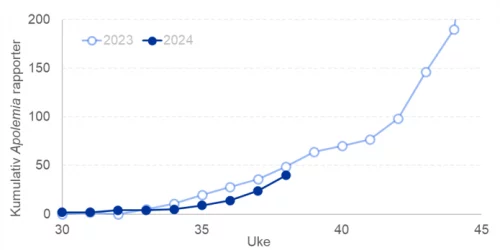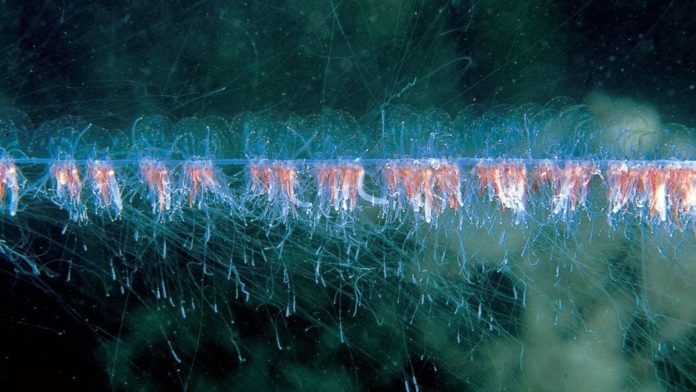While no significant damage has been reported by fish farmers yet, sightings of the jellyfish are increasing week by week.
Barbed-wire jellyfish have returned to Norwegian waters, reaching levels comparable to last year, and researchers are now asking for assistance from the aquaculture industry.
The Jellysafe research project, led by Norway’s Institute of Marine Research, is calling for collaboration to better understand the jellyfish’s behavior and how to mitigate its impact on fish farms.
In a press release, researchers at the institute stressed the importance of gathering samples from across the Norwegian coastline to identify potential genetic differences between jellyfish populations.

“We want samples from the entire coast so that we can examine if there are genetic differences between individuals,” said Aino Hosia from the University of Bergen. The project will distribute sampling kits to contributors to ensure high-quality samples are collected.
More than 3 million salmon dead following attacks from barbed wire jellyfish
Tina Oldham from the Institute of Marine Research encouraged the use of the institute’s app and website to log sightings of the pearl-chain jellyfish. “This helps us compile information that can be used for weekly updates and maps that the industry can use to track jellyfish activity,” she explained.
The barbed-wire jellyfish, a species that can grow up to 30 meters in length, poses a potential threat to fish farms.
The project aims to develop preventative measures and equipment to minimize the jellyfish’s impact. Marius Andersen from project partner SINTEF Ocean noted that several suppliers and entrepreneurs have come forward with ideas for solutions, which will be tested in collaboration with the industry.
The Jellysafe project has also invited the aquaculture sector to participate in a discussion forum, where companies can share experiences, access real-time results, and help prioritize solutions.



